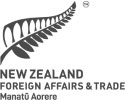Weekly Global Report:
Global
IMF revises global growth upward
The International Monetary Fund (IMF) has revised its global growth forecast upward, projecting 3.0% growth in 2025 and 3.1% in 2026, reflecting stronger-than-expected economic activity ahead of anticipated tariff hikes, lower-than-expected U.S. tariff rates, improved financial conditions, and fiscal expansion in key economies. Inflation is expected to ease gradually, with global headline inflation forecast at 4.2% in 2025 and 3.6% in 2026, though it is likely to remain above target in the United States while staying more subdued in other major economies.
Despite the improved outlook, the IMF warns that risks remain tilted to the downside. A resurgence in tariffs, geopolitical tensions, and financial market volatility could undermine growth. The report emphasises the importance of restoring confidence through predictable trade frameworks, fiscal discipline, and structural reforms. The IMF says that a coordinated policy response is needed to support global stability, reduce fragmentation, and ensure a sustainable recovery. You can read more here.(external link)
NCTAD Calls For Global Plastics Treaty
The August 2025 United Nations Trade and Development agency (UNCTAD) Global Trade Update highlights plastic pollution as become a transboundary issue and what could be done to address it. The report points out that in 2023, global plastic trade exceeded USD1.1 trillion, yet 75% of all plastic ever produced has become waste. The report underscores how low tariffs on fossil fuel-based plastics (averaging 7.2%) make them artificially cheap, while natural substitutes like bamboo and paper face significantly higher tariffs (14.4%), discouraging sustainable innovation and trade. UNCTAD is concerned that although plastics are linked to pollution, biodiversity loss, and climate change, there is no comprehensive international treaty governing their lifecycle. Read more here(external link).
ADB revises Asia-Pacific outlook down
The Asian Development Bank’s (ADB) August 2025 outlook revises down growth forecasts for developing Asia and the Pacific to 4.7% in 2025 and 4.6% in 2026, citing rising trade uncertainty and the impact of higher U.S. tariffs. While the region saw strong momentum in early 2025 due to robust domestic demand and pre-tariff export surges, that momentum is expected to slow. Southeast Asia faces the steepest downward revisions, with growth now projected at 4.2% in 2025, reflecting its vulnerability to shifting trade dynamics.
For the Pacific subregion, growth is forecast to remain at 3.9% in 2025, but is revised down to 3.5% in 2026, largely due to an expected softening in visitor arrivals. This reflects the region’s continued reliance on tourism and external demand. Meanwhile, inflation across developing Asia and the Pacific is expected to ease to 2.0% in 2025 and 2.1% in 2026, supported by stronger agricultural output and lower oil prices. Key risks include escalating trade tensions, renewed geopolitical instability, and a faster deterioration in China’s property market, all of which could further weaken regional growth. Read more here(external link).
Americas
Brazil inaugurates thermoelectric plant in Rio de Janeiro designed to operate with up to 50% hydrogen
On 29 July, Brazilian President Luiz Inácio Lula da Silva inaugurated UTE GNA II, a natural gas thermoelectric plant in Rio de Janeiro. In a post on X, President Lula described the plant as “the largest…in Latin America” stating that it “has the capacity to serve 8 million households.” President Lula further wrote, “the plant generates energy with lower emissions and was designed to operate with up to 50% hydrogen in place of natural gas”.
Update on US tariffs on Mexico
On 1 August 2025 (US time) President Donald Trump announced via a Truth Social post(external link) that he and Mexican President Claudia Sheinbaum had agreed to extend the deadline for a tariff deal between the US and Mexico by 90 days. President Trump wrote, “We have agreed to extend, for a 90 Day period, the exact same Deal as we had for the last short period of time, namely, that Mexico will continue to pay a 25% Fentanyl Tariff, 25% Tariff on Cars, and 50% Tariff on Steel, Aluminium, and Copper.” The announcement keeps in place the 25% tariff on all goods from Mexico not covered by the existing free-trade agreement between the United States, Mexico and Canada. Per a letter (external link)sent by President Trump to President Sheinbaum on 11 July, that rate had been set to rise to 30% on 1 August 2025.
US announces new tariffs on Brazil
Also on 30 July (US time), The Trump administration has released an Executive Order(external link) (EO) imposing 40% tariffs on Brazil under the National Emergency Declaration & International Emergency Economic Powers Act (IEEPA) stacked on top of the existing 10% reciprocal tariff, bringing Brazil’s total rate to 50% - in addition to the US’s standard MFN tariffs.
Key points from the Executive Order include:
- Effective date: The EO states that the 40% tariffs will take effect 7 days after the EO is signed, i.e. 12:01 a.m. on 6 August 2025.
- Tariff application: The EO specifies that the 40% tariff does not stack on top of any existing or future Section 232 tariffs. For sectors subject to tariffs (e.g. steel, aluminium, and copper), Brazil will be subject to the applicable sectoral tariff only.
- Exemptions: The EO exempts a wide range of products from the 40% tariff, including: civil aircraft and parts and components thereof, silicon metal, pig iron, metallurgical grade alumina, tin ore, wood pulp, precious metals, energy and energy products, and fertilizers, as well as goods listed in Annex B of the EO – e.g. orange juice and Brazil nuts.
US announces US-Korea Trade Deal
On 30 July (US time), President Trump announced a “Full and Complete Trade Deal with the Republic of Korea” on Truth Social(external link). In the post, the President hints that an additional South Korean investment amount will be revealed during an upcoming bilateral meeting at the White House with President Lee Jae Myung. We presume more details will emerge from this meeting.
Key points from President Trump’s Post include:
- USD350 billion investment from South Korea into U.S.-controlled ventures.
- USD100 billion purchase of U.S. liquefied natural gas (LNG) and other energy products.
- A 15% tariff on South Korean imports to the U.S., and the assertion that “America will not be charged a Tariff” by Korea.
- South Korea will be “fully open to U.S. trade”, including sectors like automobiles and agriculture.
The President of Korea’s Office has responded to the deal and noted:
- Korea did not open beef and rice access to the US further.
- USD150 billion of the USD350 billion investment fund will be dedicated for shipbuilding cooperation.
- Automobiles will also be subject to the 15% tariff.
- Semiconductors and pharmaceutical products (subject to future specific tariffs) will receive “comparable treatment compared to other countries”.
More reports
- Read the previous global economic round-up
A full list of global economic round-ups can be found here(external link)
If you would like to request a topic for reporting please email exports@mfat.net
External links
The following links may provide useful information to businesses:
NZTE’s website(external link) and their myNZTE(external link) provides a range of insights and tools available to support New Zealand exporters.
The Treasury releases a weekly economic update(external link) every Friday. Stats NZ has published a data portal(external link) with near real-time economic indicators.
MBIE publishes a sector reports series(external link) which provides regularly updated reports on all industry sectors that make up the New Zealand economy. These include official economic data and the challenges and opportunities that face New Zealand’s industry sectors.
Business.govt.nz(external link) provides tools and advice from across government to save small businesses’ time and help make the business a success.
MFAT has created a tariff finder(external link) which is designed to help goods exporters and importers maximise benefits from New Zealand’s Free Trade Agreements and compare tariffs in 136 other markets.
The all of government Trade Barriers(external link) website can be used to register any trade barriers experienced or issues exporting to an offshore market. Queries can be sent via the website or through the MFAT Exporter Helpline 0800 824 605. Enquiries will be sent to the government agency best placed to answer.
Tatauranga Aotearoa Stats NZ provides official data on the value of New Zealand’s exports and imports of both goods and services, by commodity type via the New Zealand Trade Dashboard(external link). This interactive dashboard is updated every quarter and allows for filtering by country and by commodity type.
Sign up for email alerts
If you would like to subscribe to this weekly update, go to our subscription page(external link) or email us at exports@mfat.net
Learn more about exporting
New Zealand Trade & Enterprise’s comprehensive market guides(external link) cover export regulations, business culture, market-entry strategies and more.
Disclaimer
This information released in this report aligns with the provisions of the Official Information Act 1982. The opinions and analysis expressed in this report are the author’s own and do not necessarily reflect the views or official policy position of the New Zealand Government. The Ministry of Foreign Affairs and Trade and the New Zealand Government take no responsibility for the accuracy of this report.
Copyright
Crown copyright ©. Website copyright statement is licensed under the Creative Commons Attribution 4.0 International licence(external link). In essence, you are free to copy, distribute and adapt the work, as long as you attribute the work to the Crown and abide by the other licence terms.

